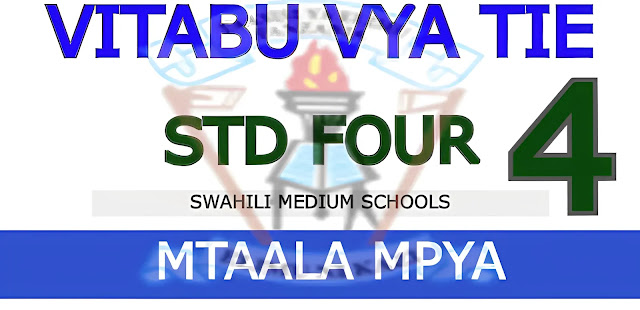Standard Four books for primary level |New curriculum (Swahili medium)
- Primary School: Basic grammar, sentence structure, vocabulary, reading comprehension, and storytelling.
- Secondary School:
- Grammar & Vocabulary: Focus on advanced grammar (e.g., passive voice, clauses, tenses) and expanding vocabulary.
- Reading & Analysis: Study a variety of texts such as novels, plays, and poems. Analyze themes, characters, and literary devices.
- Writing Skills: Focus on essay writing, argumentative writing, creative writing, and structuring complex pieces of writing
DOWNLOD VITABU HAPA👇
2. Mathematics
- Primary School: Basic arithmetic (addition, subtraction, multiplication, division), fractions, basic geometry, and simple word problems.
- Secondary School:
- Algebra: Introduction to variables, equations, and inequalities.
- Geometry: Learn about angles, triangles, circles, and volume of 3D shapes.
- Statistics & Probability: Work with averages, probability, and data interpretation.
- Advanced Arithmetic & Functions: Concepts like percentages, ratios, and proportions, followed by more advanced topics like functions and graphing.
3. Science
- Primary School: Basic concepts of biology, physics, and chemistry, including topics like plants, animals, simple machines, weather, and matter.
- Secondary School:
- Biology: Learn about human biology, ecosystems, genetics, and cell structures.
- Chemistry: Study elements, compounds, periodic table, chemical reactions, and acids/bases.
- Physics: Learn about forces, energy, motion, electricity, and light.
- Practical Skills: Focus on laboratory experiments, scientific method, and data analysis.
4. History
- Primary School: Introduction to world history, including important events, figures, and basic concepts of time and chronology.
- Secondary School:
- Ancient & Modern History: Study specific time periods, such as ancient civilizations, medieval history, world wars, and modern history.
- Analysis: Learn to interpret primary sources, analyze historical events, and understand historical impact.
- Essay Writing: Learn to structure and write detailed essays on historical topics, using evidence and critical thinking.
5. Geography
- Primary School: Learn about countries, continents, oceans, basic geography terms, and maps.
- Secondary School:
- Physical Geography: Study topics like weather, climate, tectonic plates, and landforms.
- Human Geography: Focus on population, urbanization, and human-environment interaction.
- Skills: Map reading, data interpretation, and fieldwork.
6. Social Studies/Civics
- Primary School: Basic understanding of community, rules, rights, and responsibilities.
- Secondary School:
- Government & Politics: Study political systems, the role of government, law, and human rights.
- Economics: Learn the basics of supply and demand, economic systems, and financial literacy.
- Social Issues: Study issues like inequality, globalization, and environmental sustainability.
7. Foreign Languages
- Primary School: Basic vocabulary, simple sentence structures, and greetings in a foreign language.
- Secondary School:
- Grammar & Syntax: Learn more complex sentence structures, tenses, and vocabulary.
- Conversation & Writing: Practice speaking, writing, and reading in the foreign language.
- Culture: Study the culture and traditions of countries where the language is spoken.
8. Technology and Computer Science
- Primary School: Basic use of computers, internet safety, and typing skills.
- Secondary School:
- Coding & Programming: Introduction to languages like Python, HTML, or Scratch.
- Digital Literacy: Understanding how to use technology responsibly, cybersecurity, and software tools.
- Advanced Software: Learning how to use software such as Microsoft Office or Google Suite for productivity.
9. Art and Design
- Primary School: Basic drawing, painting, and craft activities.
- Secondary School:
- Techniques & Styles: Learn about various art techniques, styles, and media (e.g., watercolor, pencil, digital art).
- Art History: Study the works of famous artists and their techniques.
- Design Principles: Understand balance, contrast, proportion, and other design concepts.


